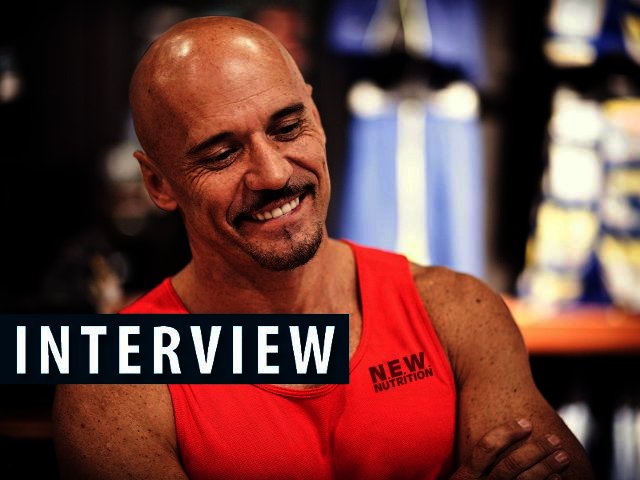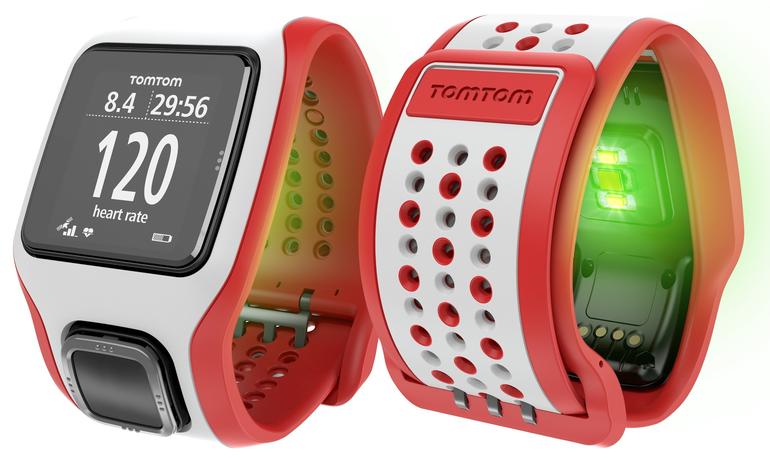John Hamlett: Coaching with the TomTom Runner Cardio
By Mike Joubert 6 August 2015 | Categories: sponsored content
With 25 years of experience under his belt, but more importantly 45 Comrades Gold medals from those that he has coached, one can say that John Hamlett knows a thing or two about winning. In fact, both 2015 Comrades Marathon winner, Gift Kelehe and his brother Andrew, who won in 2001, were trained by Hamlett. TechSmart caught up with this TomTom ambassador to talk about how he has used the new Runner Cardio GPS watch with built-in heart rate monitor while coaching some of the top athletes in the country.

While the majority of training/GPS watches have the ability to accommodate a Bluetooth heart rate monitor strap, the TomTom Runner Cardio is one of the first ones that has it built-in. Hamlett confirms what many Cardio owners already know – using the Cardio is just so much more convenient than having to deal with an added heart rate strap. “Before the Cardio, the athletes used the heart-rate straps, but I found that when training, they generally didn’t use it,” he notes. This led to the position where Hamlett had the athletes’ regular training results, but not the data to see the impact training had on the body.
With the Cardio, the heart-rate data is immediately viewable on the watch’s screen, and also online once uploaded into your profile, making it easier to track fitness levels. “You can actually see the changes to the heart rate of athletes. It’s not massive, a few beats, but you can see how the heart rate goes down after a while for the same distance. You can tell, this guy is getting stronger, more conditioned,” Hamlett enthused.
It’s in the report
For Hamlett, the value of the Cardio lies as much in report-back as it does in immediate heart rate measurement. Seeing that he is coaching a number of different athletes from across the country, being present at every training session is just not possible. With the TomTom My Sports companion app, athletes upload runs to their online profiles, and from there Hamlett can monitor their progress.
Unfortunately for his runners, there is no escape from Hamlett’s discerning eye, since he will phone them up afterwards asking them to log into their profiles to study the training together. “Look at that third fartlek session, you were playing around. Why was that?,” Hamlett infers a talk that one suspects he has had more than just once. He also mentions that he has caught athletes switching watches in training sessions, being able to tell just by studying the heart rate afterwards.
Although unintended, Hamlett might have stumbled across yet another feature to the TomTom Cardio – that of heart problem detector. He relates the story of one of his older athletes who trains with the TomTom Cardio GPS Watch. During recent sessions the athlete’s heart rate would rise to 200, but instead of dropping it would remain there for an hour afterwards. Since he has been training for years, they initially thought it might be a problem with the watch. But when a second TomTom Cardio GPS watch confirmed the same, the athlete was immediately sent to a doctor, who identified a heart irregularity.
The mind is the challenge
For the hardnosed Hamlett, the TomTom Cardio confirms what he instinctively knows ─ on certain days athletes’ biggest obstacle is the mind and not the body. “Sometimes you look at a guy and he looks exhausted, but as a coach something tells you he is not. You look at the watch and his heart rate is ticking along nicely,” Hamlett says. “What is happening is his mind is tired today, so let’s squeeze a bit more out of him, pull him right to the edge again.” With this Hamlett confirms that coaching via the TomTom Cardio GPS Watch might sometimes be more popular with him than with the athletes.
The truth is, however, that for athletes training at such a high level, all the small extra effort adds up. “People think it’s the big thing you do that change you. No, it’s all the little things that add value at the end of the day,” Hamlett notes. “The 10% adds the win. You can do the base but you still need that 10% to make you the champion.”
A clear interface
A consideration that often comes as an afterthought for buyers, is the interface of the GPS watch. Here Hamlett is complimentary towards the TomTom Cardio’s simple interface and setup, since it’s not too technical, also being adjustable to what details you can view. “Some of the athletes that I coach do not have a lot of tech knowledge. It’s easy to explain to them how the Cardio works, and from a number of other watches we’ve tested, the Cardio has the clearest interface and setup,” he says. Hamlett grins when he mentions that the large layout benefits “maybe not the younger guys, but definitely the older guys,” noting that he doesn’t run with his reading glasses.
He is also complimentary towards the TomTom Cardio’s programmable interval training for fartlek sessions. “In the past you had to count poles, now you don’t have to do that anymore. You programme in your warm-up and cool-down, and periods of work and rest. Push the button, it beeps and you go, it beeps and you stop.” Practically this came in handy when the training group were preparing for the Comrades in Dullstroom, since lampposts used in a more traditional fartlek session became very scarce.
But it is ultimately the built-in heart rate monitor that gets the highest praise, with Hamlett calling it a “mind-blowing extra”. How accurate is it though? According to Hamlett it’s close to spot on, having compared the results with that of an electrocardiogram machine.
On race day
So how much of a difference does a good watch make on race day? Hamlett is careful not to over emphasise the importance of a watch during an event like the Comrades. He relates the story of a front runner of a few years back who put too much value on information derived from his heart rate monitor, and subsequently dropped to second after he thought he was pushing too hard.
Hamlett believes a watch is essential for making sure you do not overshoot at the start, and that Kelehe and him were constantly monitoring heart rate during the race, but when they hit 20 km they banked on the old element of ‘bite-the-bullet-and-go’. Hamlett explains, “Your heart rate might be running at 210, instead of 200, and you are over-running, but you are fighting to win this race. It’s like a Formula 1 driver – his car might be on the limit but he is squeezing whatever he can to get over the line.”
Much like our Formula 1 driver with his car, it is clear that Hamlett know how to squeeze out the essence of a champion. While he makes it clear that you shouldn’t depend too much on any tool, both in coaching and training, having the TomTom Runner Cardio onboard has made a clear difference in the way Hamlett helps his athletes. Ultimately he notes that when it comes to winning races, one can use all the tools at your disposal, but there is a human element that one cannot exclude, and that is sheer determination to finish first.
.jpg)
Gift Kelehe's speed and heart rate during his 2015 Comrades Marathon run
.jpg)
The 2015 Comrades Marathon up run as tracked by Kelehe on race day
Most Read Articles

Have Your Say
What new tech or developments are you most anticipating this year?



